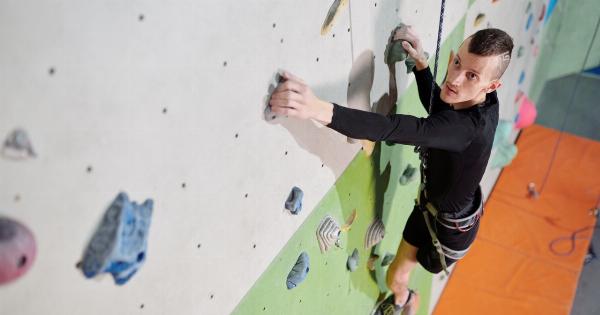Colors play a significant role in our lives, impacting our mood, emotions, and even cognitive abilities. When it comes to children, exposure to various colors can have a profound effect on their cognitive development.
Researchers have found that certain colors can enhance children’s cognitive skills, including memory, attention, and problem-solving abilities. In this article, we will explore some of the colors that have been proven to have a positive impact on children’s cognitive abilities.
The Power of Blue
Blue is often associated with calmness and tranquility. Studies have shown that exposure to blue can improve cognitive performance, particularly when it comes to tasks that require creativity and thinking outside the box.
This color stimulates the brain and fosters a sense of focus and concentration, making it ideal for learning environments. Incorporating shades of blue in classrooms or study areas can help enhance children’s cognitive abilities and promote a more productive learning experience.
Embracing the Energizing Effects of Yellow
Yellow is a vibrant color that evokes feelings of happiness and positivity. This color has been linked to increased energy levels and improved focus, making it ideal for activities that require attention to detail.
Research suggests that exposure to yellow can enhance memory and boost mental performance. Integrating yellow elements in educational materials, such as posters or stationery, can create a stimulating environment for children and enhance their cognitive skills.
Stimulating Creativity with Purple
Purple has long been associated with creativity and imagination. This color is known to stimulate the brain, encouraging innovative thinking and problem-solving skills.
Incorporating shades of purple in art rooms or creative spaces can help inspire children’s imagination and enhance their cognitive abilities. Whether it’s using purple hues in the room decor or providing art supplies in various shades of purple, this color can foster a creative and open-minded mindset.
The Soothing Effects of Green
Green is a color often associated with nature and relaxation. Research suggests that exposure to green can promote a sense of calmness and reduce anxiety levels, ultimately improving cognitive performance.
Green is also known to enhance concentration and attention, making it an excellent choice for study areas or spaces where children engage in tasks that require sustained mental effort. Adding touches of green, such as plants or green-colored furniture, can create a soothing environment that enhances children’s cognitive skills.
Inspiring Focus with Red
Red is a bold and intense color that can have a powerful impact on cognitive performance.
While prolonged exposure to red can lead to overstimulation and restlessness, brief exposure to this color has been found to improve attention to detail and memory. Using red accents strategically in learning environments, such as highlighting important information or incorporating red elements in educational games, can help inspire focus and enhance cognitive skills in children.
The Impact of Orange on Cognitive Abilities
Orange is a warm and energetic color that can have a positive impact on cognitive abilities. This color is known to stimulate mental activity and enhance memory function.
Research suggests that exposure to orange can increase oxygen supply to the brain, promoting alertness and heightened mental performance. Adding orange elements in educational materials or using orange as the primary color in learning spaces can create an invigorating environment that enhances children’s cognitive skills.
Calming Effects of Pink
Pink is often associated with feelings of calmness and relaxation. This gentle and soothing color can have a positive impact on children’s cognitive abilities, particularly in reducing aggressive behavior and enhancing focus.
Research indicates that exposure to pink can help children concentrate and perform better on tasks that require sustained attention. Integrating pink elements, such as seating or decorative items, in learning environments can create a calming atmosphere and promote cognitive development in children.
Boosting Brainpower with White
While white may not be considered a traditional “color,” it plays a crucial role in cognitive development. White provides a clean and neutral background for learning, allowing children to focus on the task at hand without distractions.
Furthermore, white reflects light, making spaces appear brighter and more inviting. Incorporating white elements in educational settings, such as whiteboards or white furniture, can enhance children’s cognitive skills by providing a visually stimulating and distraction-free environment.
The Invigorating Effects of Orange
Orange is a color that exudes energy and enthusiasm. This vibrant color has been found to increase mental activity and stimulate creativity.
Studies have shown that exposure to orange can enhance problem-solving skills and foster a positive attitude towards learning. Using orange accents in learning spaces or providing orange-colored learning materials can create an invigorating atmosphere that enhances children’s cognitive abilities.
Creating a Balanced Environment with a Variety of Colors
While specific colors have been found to enhance cognitive skills, it’s important to create a balanced environment by incorporating a variety of colors. Each color has its own unique impact on cognitive abilities, emotions, and mood.
By providing a diverse range of colors in learning spaces, you can optimize children’s cognitive development and create a well-rounded educational experience.
Conclusion
Colors have a remarkable influence on children’s cognitive skills, memory, attention, and problem-solving abilities.
By understanding the impact of colors, educators and parents can create learning environments that promote cognitive development effectively.
Incorporating blue to encourage focus, yellow to boost energy levels, purple to stimulate creativity, green to induce relaxation, red for better attention, orange to increase mental activity, pink to promote calmness, white for distraction-free learning, and a variety of colors for a balanced environment can all contribute to enhancing children’s cognitive abilities. By harnessing the power of colors, we can help children reach their full cognitive potential.





























